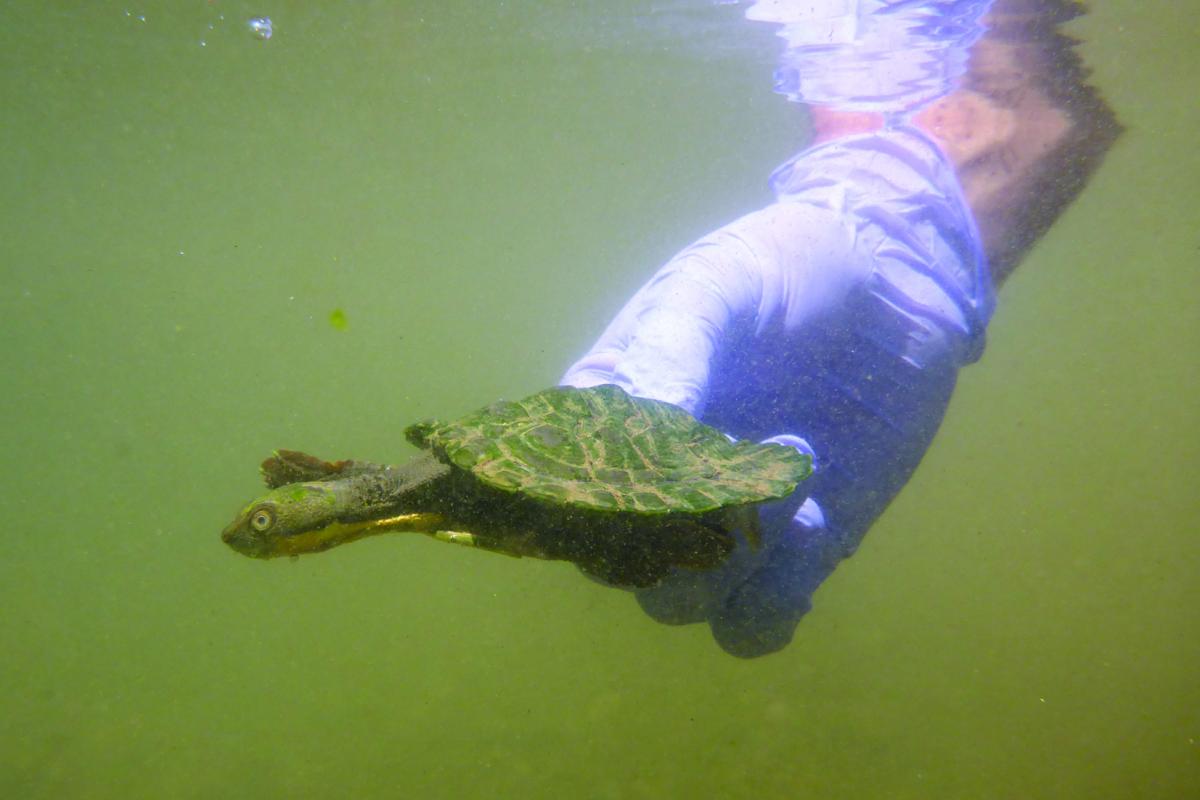Analyzing Disease Risk in Bellinger River Snapping Turtles
CPSG Australasia facilitated a workshop in Australia to assess all the known risks to the Bellinger River Snapping Turtle, with emphasis on the Bellinger River Virus.

Photos © Brett Vercoe and Shane Ruming
Facts
- Bellinger River snapping turtles (BRSTs) are medium-sized freshwater turtles with a shell length up to 185 mm in males and 250 mm in females.
- In common with many other Australian freshwater turtles, mortality rates in BRSTs decrease with age. Therefore the ability of the BRST population to recover from a catastrophic loss of adults is limited without intervention.
- Other identified potential threats to this species include limited distribution and habitat requirements, predation, water quality, climate change, and hybridization and competition with Murray River turtles (Emydura macquarii).
The Situation
In early 2015, a previously unidentified virus resulted in the loss of most of the adult population of the Bellinger River snapping turtles (Myuchelys georgesi). This endemic turtle's distribution is confined to a 60km stretch of the Bellinger River and, possibly, a portion of the nearby Kalang River, in coastal northeastern New South Wales (NSW). Prior to this event, the population was estimated to be 1,600 to 4,500 indiviuals. The population estimate is now 200-300 individuals, predominately juveniles, and the species has been listed as Critically Endangered. An ex situ population has been established to provide immediate insurance against extinction and to generate turtles for release to aid recovery.
The Process
In November 2016, the NSW Office of Environment and Heritage brought 16 experts from eight organizations to Taronga Zoo to discuss and recommend the next steps in the recovery of BRSTs based on their agreed interpretation of the information gathered to date. The workshop, facilitated by CPSG Australasia, included assessments of all known risks to BRSTs, with Bellinger River Virus given particular attention through a comprehensive disease risk analysis (DRA). This was the first workshop in which the IUCN SSC/World Organisation for Animal Health (OIE) DRA process was fully incorporated into CPSG's broader conservation planning approach, ensuring disease threats were considered in the context of other potentially contributing threatening processes.
The Results
The resulting action plan includes disease investigation and mitigation measures, protection and threat mitigation on the river, captive breeding for release, and ways to engage the local community. Longer-term priorities (5-20 years) emphasized reducing the impact of fox predation and developing an integrated program of riparian rehabilitation and in-stream health. Since the workshop, there has been successful breeding with the captive population at Taronga Zoo, producing 21 hatchlings. A second population of juveniles has been acquired from the river, which will form a second captive breeding population when the turtles reach maturity.
More Information


